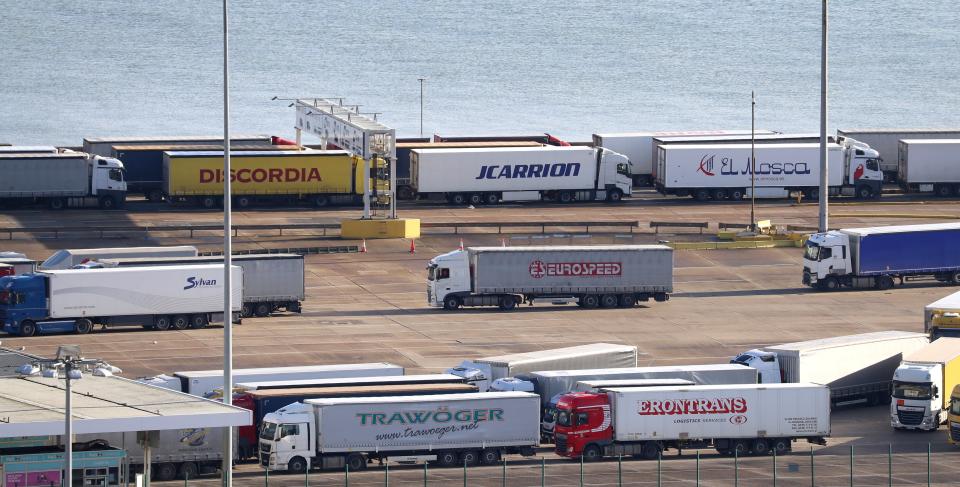How to cope with the VAT nightmare on EU exports under the new Brexit rules

The migraines caused to importers and exporters from Brexit have been well documented.
The welter of paperwork and additional charges are becoming well-known, leading some traders simply to give up, while the majority soldier on with the help of a customs broker or freight forwarder.
Less well-known is the issue of another new complexity - VAT.
Before we left the EU and during the transition period, the UK was part of the EU’s VAT world and was essentially invisible.
Now, though, you have to register to pay VAT in every country separately just as you do for states outside the EU. You only have to pay it once, but it can be a complex process and tricky, not to mention time consuming, to get it refunded.
If you or your business has tried exporting to the EU and you’ve been struggling with the new rules, you’re far from being alone. Many of you have contacted the Evening Standard to tell us of your difficulties.
So, to try and help you through the quagmire, we asked Selwyn Stein, managing director of specialist advisers VAT IT has seen inquiries double since January. So we asked him for some help to the most common questions.
Can I just get my paperwork done when I get to the border, and what do I need to do?
No. Get your goods consigned correctly before you, or your goods, get to the port. Most importantly, that means obtaining an EU Economic Operators Registration and Identification (EORI) number and making sure it corresponds with your VAT number for the country you’re sending it to.
Other details you’ll need for your paperwork are the correct invoice information, customer details and description of the goods. Without them, the customs agency at the point of entry into the EU won’t let the goods in.
I shipped my goods but my customer in the EU is refusing to pay import VAT and duties. What do I do?
This has been a particularly common problem as traders and customers transact for the first time under the new post-Brexit rules. You must clearly agree before shipping whether you or your customer has the responsibility to clear customs and pay whatever tax and duties are applicable so you don’t end up in a row later.
Don’t leave it until you’ve been fined and had your goods seized at the border. Again, make sure you have your EU EORI number as your GB one no longer works for importing to the EU.
I managed to work out the easiest way to ship goods by using a number of different websites. Is that enough?
Be careful. Sometimes what looks the easiest or cheapest doesn’t end up working out that way. For example, you may decide for the sake of speed to fly your product to Germany because your customer is in central Europe.
Although Germany’s VAT rate is 1% lower than France, there is often more paperwork required and other admin that can cause delays.
France, on the other hand, may have less paperwork, but obviously adds to the travel time if you need to get your goods to Eastern Europe.
One of your prime concerns with VAT is cashflow. You should be able to claim it back eventually but you will still need to pay it up front. At around a fifth of the value of the product, that’s a big chunk of change. And VAT rates can vary from around 19-27% from country to country.
Make sure you’ve discussed this fully with your freight forwarder and figured out the best route. Better still, get professional advice unless you have time to spend on all the administrative options.
In which country should I register for VAT?
Probably the country of entry is best. If your product is shifted from, say the airport in Germany to Poland, it will only be VAT applicable on entry to the EU, so you won’t have to pay it again when it crosses into Poland.
Where do I go to get all the information on how to ship to these various countries?
I’m afraid there is no central place for VAT, customs and logistics advice and how they interact. Each country has different rules, paperwork requirements and associated costs. If you are shipping to clients in multiple countries, you’re best off getting professional advice. Language barriers can be another problem if you aren’t fluent in your customer’s tongue.
Can I just register an EU company to make this all go away?
Not necessarily. If you still have a UK presence it doesn’t always work. In fact it can make the VAT issue more complicated to get your goods across different countries.
Besides which, it’s expensive and takes a lot of paperwork to do.
Presumably I only have to fill out VAT forms for the country of destination where my customer is, right?
Wrong. Forms have to be filled out for every country your goods will pass through, particularly the country of entry if this is different to your end customer.
Any hiccups can delay deliveries, see goods held at borders or returned to the UK and ultimately lose revenue for businesses.
The good news is, if you’re shipping goods directly to consumers, you can use an EU one-stop-shop where you only have to register for one country.
You will get used to the new system, but it is a lot more complicated than it was before. The idea of frictionless trade with the EU was always a myth. Now we just have to learn to live with it.
Read More
Exports to EU bounce back in February after record fall
Forget “teething problems”, Brexit is still hitting UK exports, say transport giants

 Yahoo Finance
Yahoo Finance 